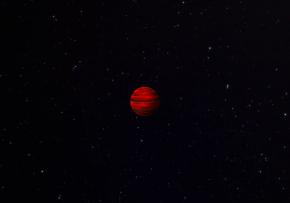 Data in Stellar Catalog come from trusted scientific sources. Primary source is Gaia space telescope mapping the stars in Milky Way. Other sources include research papers, Simbad catalog and Exoplanet.eu database.
Data in Stellar Catalog come from trusted scientific sources. Primary source is Gaia space telescope mapping the stars in Milky Way. Other sources include research papers, Simbad catalog and Exoplanet.eu database.
 Objects listed in the Stellar Catalog often have values that are estimates. These estimates are determined using their known characteristics, such as spectral type, brightness across different wavelengths, distance from a star, and other factors.
Objects listed in the Stellar Catalog often have values that are estimates. These estimates are determined using their known characteristics, such as spectral type, brightness across different wavelengths, distance from a star, and other factors.
 Stellar Catalog is continuously updated with new information from research papers. Stellar and planetary data are validated by automatic processes as well as humans.
Stellar Catalog is continuously updated with new information from research papers. Stellar and planetary data are validated by automatic processes as well as humans.

 stars
stars exoplanets
exoplanets studies
studies



 Distance from the primary:
Distance from the primary: 
 More about Star mass in StellarGuide
More about Star mass in StellarGuide



 Apparent magnitude (V):
Apparent magnitude (V): 
 20. 03 2023
20. 03 2023 Stars
Stars




 X (twitter)
X (twitter) facebook
facebook


 česky
česky espaňol
espaňol deutsch
deutsch francais
francais